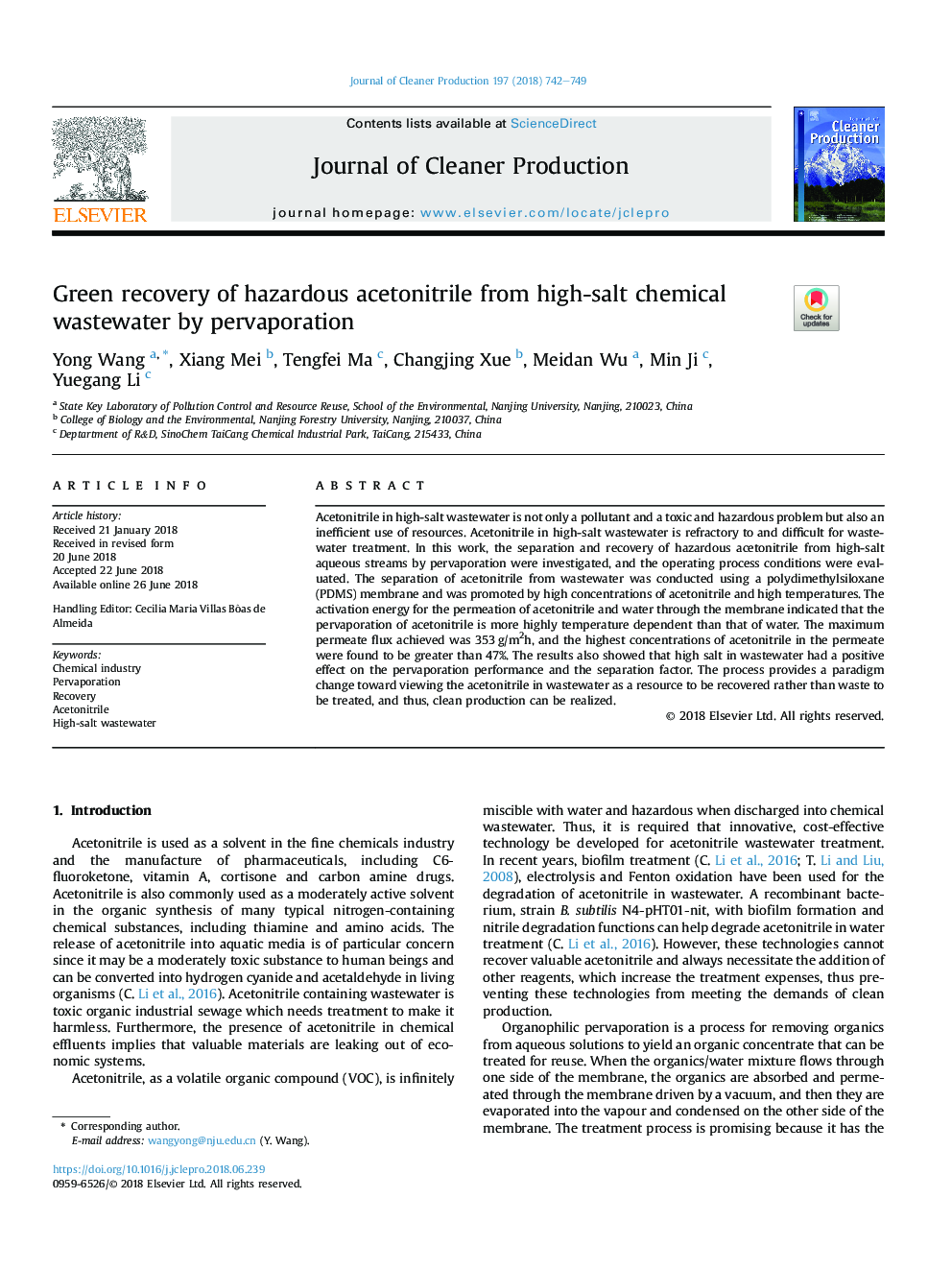| Article ID | Journal | Published Year | Pages | File Type |
|---|---|---|---|---|
| 8094076 | Journal of Cleaner Production | 2018 | 8 Pages |
Abstract
Acetonitrile in high-salt wastewater is not only a pollutant and a toxic and hazardous problem but also an inefficient use of resources. Acetonitrile in high-salt wastewater is refractory to and difficult for wastewater treatment. In this work, the separation and recovery of hazardous acetonitrile from high-salt aqueous streams by pervaporation were investigated, and the operating process conditions were evaluated. The separation of acetonitrile from wastewater was conducted using a polydimethylsiloxane (PDMS) membrane and was promoted by high concentrations of acetonitrile and high temperatures. The activation energy for the permeation of acetonitrile and water through the membrane indicated that the pervaporation of acetonitrile is more highly temperature dependent than that of water. The maximum permeate flux achieved was 353â¯g/m2h, and the highest concentrations of acetonitrile in the permeate were found to be greater than 47%. The results also showed that high salt in wastewater had a positive effect on the pervaporation performance and the separation factor. The process provides a paradigm change toward viewing the acetonitrile in wastewater as a resource to be recovered rather than waste to be treated, and thus, clean production can be realized.
Related Topics
Physical Sciences and Engineering
Energy
Renewable Energy, Sustainability and the Environment
Authors
Yong Wang, Xiang Mei, Tengfei Ma, Changjing Xue, Meidan Wu, Min Ji, Yuegang Li,
